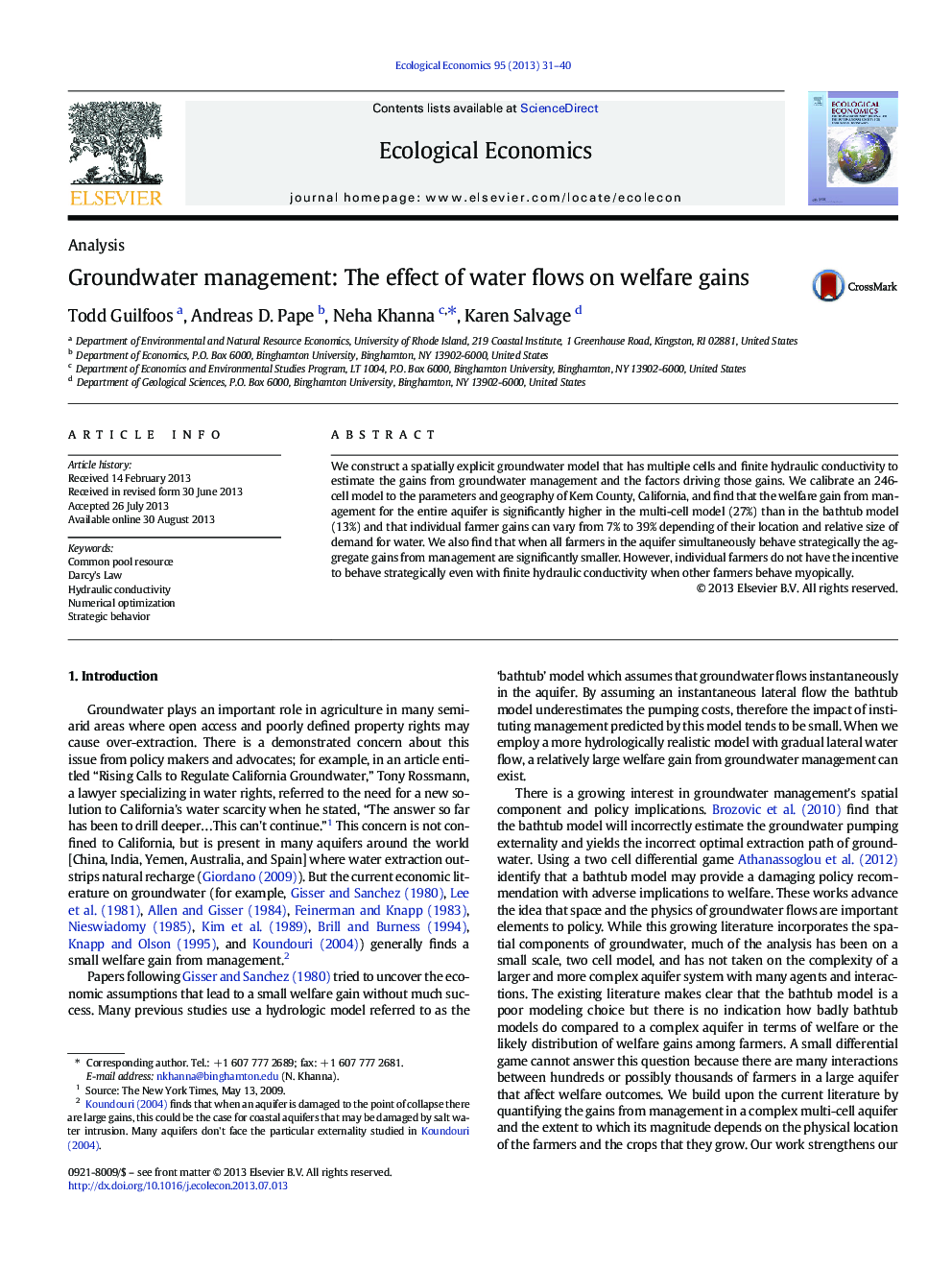| Article ID | Journal | Published Year | Pages | File Type |
|---|---|---|---|---|
| 5049780 | Ecological Economics | 2013 | 10 Pages |
â¢We study groundwater management in a 246-cell aquifer with finite conductivity.â¢We find optimal welfare using numerical optimization techniques.â¢There are substantial welfare gains from management when all farmers are myopic.â¢When all farmers behave strategically, welfare gains are substantially lower.â¢But, no farmer has an incentive to be strategic when other farmers are myopic.
We construct a spatially explicit groundwater model that has multiple cells and finite hydraulic conductivity to estimate the gains from groundwater management and the factors driving those gains. We calibrate an 246-cell model to the parameters and geography of Kern County, California, and find that the welfare gain from management for the entire aquifer is significantly higher in the multi-cell model (27%) than in the bathtub model (13%) and that individual farmer gains can vary from 7% to 39% depending of their location and relative size of demand for water. We also find that when all farmers in the aquifer simultaneously behave strategically the aggregate gains from management are significantly smaller. However, individual farmers do not have the incentive to behave strategically even with finite hydraulic conductivity when other farmers behave myopically.
